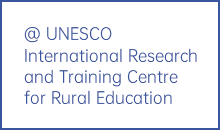Educational research has experienced remarkable growth in the past three decades, providing students with an increasingly sound base of knowledge from which to practice. Yet as we proceed into the twenty-first century, many questions endure and much remains to be done to incorporate research-based knowledge into educational practice. Every step of the way, the educational research process is fraught with decisions, trade-offs and uncertainty. It is not an easy route to traverse. This book is designed to serve as a road map that can inspire the direction if not give absolute instructions. As the field of educational research grapples with its identity, the book uses better tools, more transparent practices and more open conversations to improve our understanding of human behaviour. The different approaches used by grounded theory researchers, phenomenologists and ethnographers are noted throughout.
The book is designed to introduce postgraduate and doctoral students to the process of scientific research in the social sciences, business and related disciplines in general and in education in particular. The book is based on the authors’ lecture materials developed over a decade of teaching postgraduate and doctoral-level classes. It acknowledges the international efforts and gives recognition to the contributions of interdisciplinary research studies commissioned from around the globe by UNESCO and its International Research and Training Centre for Rural Education (INRULED) of Beijing, in particular.
The target audience for this book includes students of MA programmes in research methods in education, as well as those embarking upon their MPhil or PhD in education, novice researchers and professors teaching courses on research methods. In addition, senior researchers who carry on research as professional activity can also benefit from this book.
The book is different from other textbooks on the market in several ways. First, unlike other books, this book is not about describing the ‘research designs’ (empirical data collection and analysis), but more importantly, its purpose is to inform action from beginning to end.
Second, the book is comprehensive, straightforward and jargon-free. It has been designed with the purpose to encourage students and researchers to contextualise their knowledge and understanding of quantitative and qualitative research designs by drawing links between the research question and its theoretical framework with the choice of the quantitative/qualitative methodology and analysis. It supports a theoretical appreciation of the field of inquiry and encourages them to balance the emphasis on methods with review of the literature and understanding of the wider context of research.
Finally, each chapter comprises user-friendly features, such as key terms, summaries, case studies, practical examples and proposed further reading on key topics discussed in this book. Self-test exercises are interspersed throughout the text rather than clustered at the end. This not only places the exercises in more relevant locations but also makes for a lovelier presentation by encouraging the students and researchers to look at easily accessible data sets and use prompts to formulate research questions and produce quality research evidence.
The content of this book is structured into six main themes. However, professors or instructors can add, drop, stretch or condense topics to customise the book to their specific needs.
Theme 1—Foundation of Educational research: Chapter 1 introduces fundamental concepts in educational research. It presents an overview of major educational paradigms shaping contemporary educational research and summarises how epistemology—a branch of philosophy dealing with the study of the nature, origin and validity of human knowledge— relates and impacts the process of educational research. Chapters 2, 3 and 4 introduce readers to the topic of research evidence for education practice, discuss the philosophical underpinnings of qualitative and quantitative research designs and other methods and describe the major purposes of educational research, respectively. The chapters suggest a head start on how to use these research designs and methods in research inquiries and improve our experiences in conducting scientific research.
Theme 2—Conceptualising a research Study: Chapter 5 deals with the subject matter related to conceptualising a research study and further sets the stage for learning about the research process by discussing issues relating to a study’s conceptualisation: the formulation of research questions and hypotheses, the review of relevant research and the development of theoretical and conceptual contexts.
Theme 3—Designs for Educational research: It presents material on qualitative and quantitative research studies. Chapter 7 attempts to highlight the significance and centrality of data in the context of educational research designs. It describes issues important to the design of research that is ethically sound. Chapter 4 discusses mixed method research designs in which the method for qualitative and quantitative inquiry is blended. Chapter 6 describes sample survey techniques and strategies for selecting samples of study participants. Chapter 8 defines the concept of an ‘education indicator’ and explains the key role of indicators as an integral part of educational research. Chapters 9 and 10 highlight the mechanism for research control for quantitative and qualitative studies and examine both types of designs with different purposes. The chapters highlight some of the critical problems in communicating with the users of research outcomes (audiences).
Theme 4—Measurement and Data Collection: It describes gathering of information for a research study. Chapters 9 and 10 discuss the overall information gathering plans and techniques, and present materials on specific data collection methods such as observation, interviews, tests questionnaires and surveys. The chapters discuss the concept of measurement and then focus on methods of assessing data quality.
Theme 5—The Analysis of research Data: It explains methods of analysing quantitative and qualitative data. Chapters 12 and 13 present the univariate method and construction of index numbers and inferential methods and analysis of time series, respectively. Both describe the development of an overall analytic strategy for quantitative studies. Chapter 9 discusses methods of doing qualitative analyses, with specific information about grounded theory, phenomenological and ethnographic analyses.
Theme 6—Communicating research and Using research results: It emphasises two types of research communication. Chapter 14 outlines the role of text, tables, graphs and charts as formats for presenting numerical data. It discusses how to write about research and prepare a research report, and prepare a thesis or dissertation. The chapter is intended to sharpen the critical awareness of educational researchers with regard to the use of research findings. Finally, the second part of the chapter presents the interpretation and appraisal of research reports and conclusion offers suggestions on utilising research to build an evidence-based practice.
It is our hope that the content, style and organisation of this book continue to meet the needs of a broad spectrum of students, researchers and other readers. We also hope that the book will help a new generation of researchers and users of research designs to solve complicated problems with greater understanding and foster enthusiasm for the kinds of discoveries that research can produce and for the knowledge that will help support an evidence-based education practice.













